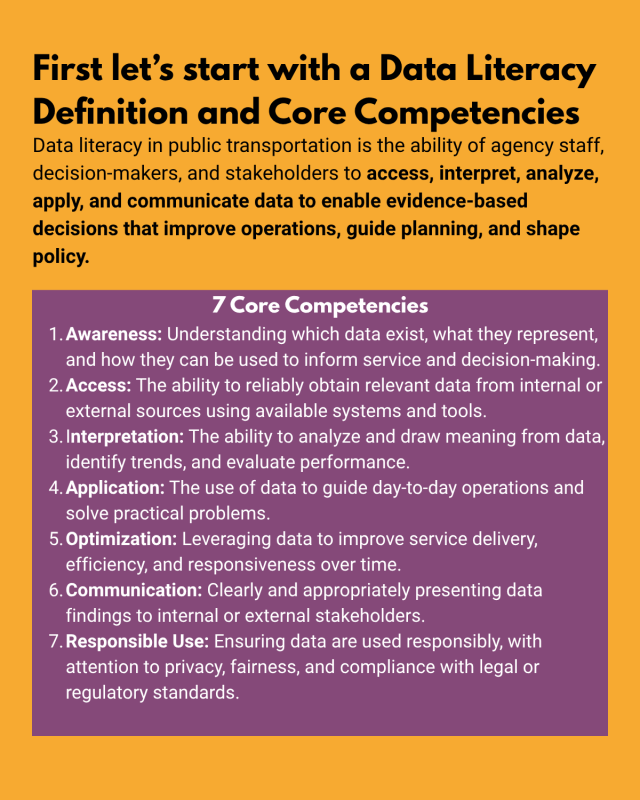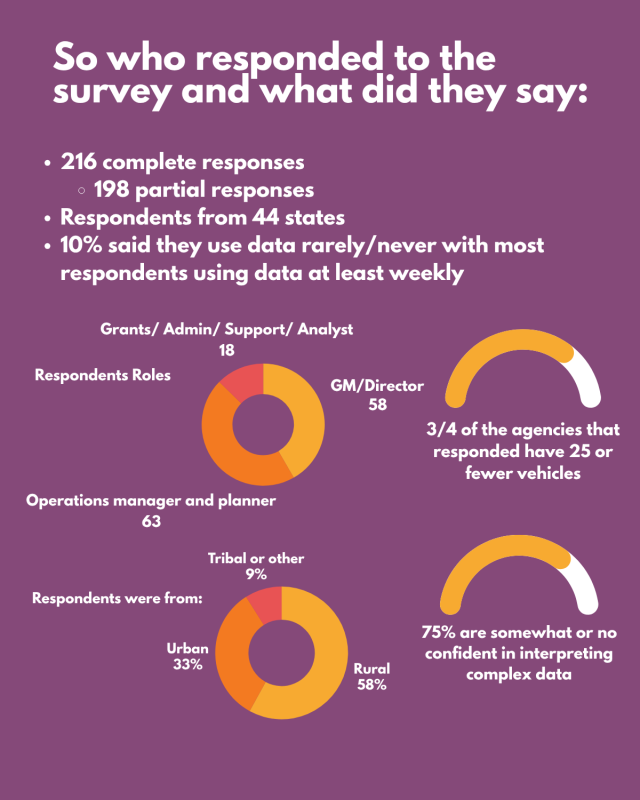The Home of N-CATT’s Data Literacy. The initiative will help rural, tribal, and small-urban transit organizations maximize their data management, data storage, and data-based decision-making skills. Data is a vital and necessary tool for transit agencies, and this new initiative aims to help create digestible, easy-to-implement tools and resources for smaller agencies. Effective data use helps transit agencies better serve riders through evidence-based decisions to support their service. The digital divide between large and small agencies is keenly felt when it comes to data and the staffing capacity to help manage data requirements.

The center will:
Want to see what N-CATT found out about through the survey:


Click here to download the full report!
Check out the Results Powerpoint here!
Check out the New N-CATT Data Resources here: